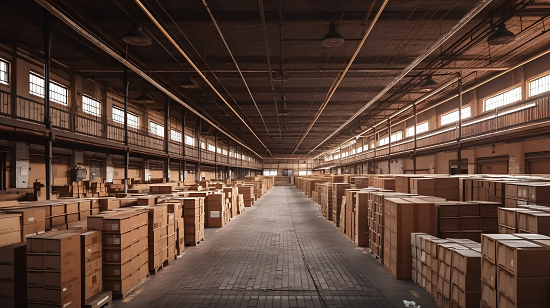Efficient Warehouse Space Utilization: Key Strategies for Success in Today’s Business Landscape
In today’s highly competitive business landscape, efficient warehouse space utilization is critical to the success of any company or industry. To this end, companies must implement a range of strategies that enable them to optimize their use of available space, minimize costs, and maximize productivity. In this article, we’ll explore some key tactics that can help businesses achieve these goals. Also, adopting lean principles can help businesses optimize their warehouse space utilization. Lean principles focus on minimizing waste and maximizing efficiency across all aspects of the business. By adopting these principles in their warehouse operations, companies can reduce inventory levels, eliminate unnecessary processes, and optimize workflow, freeing up space for other uses.
Choose an efficient storage system and increase vertical space
Firstly, it’s essential to establish an efficient storage system that makes optimal use of available vertical space. This can involve installing shelving units, racks, bins, or pallets that allow for the organized storage of products and materials. By utilizing vertical space effectively, companies can increase their storage capacity while reducing the need for additional floor space. Also Mezzanine floors are a cost-effective solution for maximizing vertical space in warehouses: by adding an additional level, companies can double their storage capacity without the need for additional floor space. Mezzanine floors can also be customized to meet the specific needs of a business and can be easily reconfigured if necessary.
Smart solutions to gain space in warehouse: off-site storage and drop shipping
In case you have a significant amount of excess inventory for a select few items, it may be worth considering off-site storage for the surplus. This can help free up space for supporting your fulfillment operations.
If your business involves storing and shipping bulky items, you might want to explore the option of drop shipping. This can help reduce your in-house inventory and costs, making your operations more efficient. If feasible, it would be advisable to incorporate cross docking for significant releases of back orders or single-line orders. This can help minimize the amount of inventory that needs to be stored in dedicated locations.
Game changer for warehouse optimization: Data Analytics and Automation Process
Data analytics can play a crucial role in optimizing warehouse space utilization. By analyzing key data points such as order frequency, product demand, and storage capacity, companies can gain insights into their inventory levels and usage patterns. This, in turn, can help them optimize their inventory levels and reduce waste, freeing up space that can be used for other purposes.
Automating warehouse processes can also be a game-changer in terms of space utilization. By automating tasks such as order fulfillment, inventory tracking, and material handling, businesses can reduce the need for manual labor and maximize productivity. Furthermore, automation can minimize the risk of errors and accidents, further improving warehouse efficiency.






